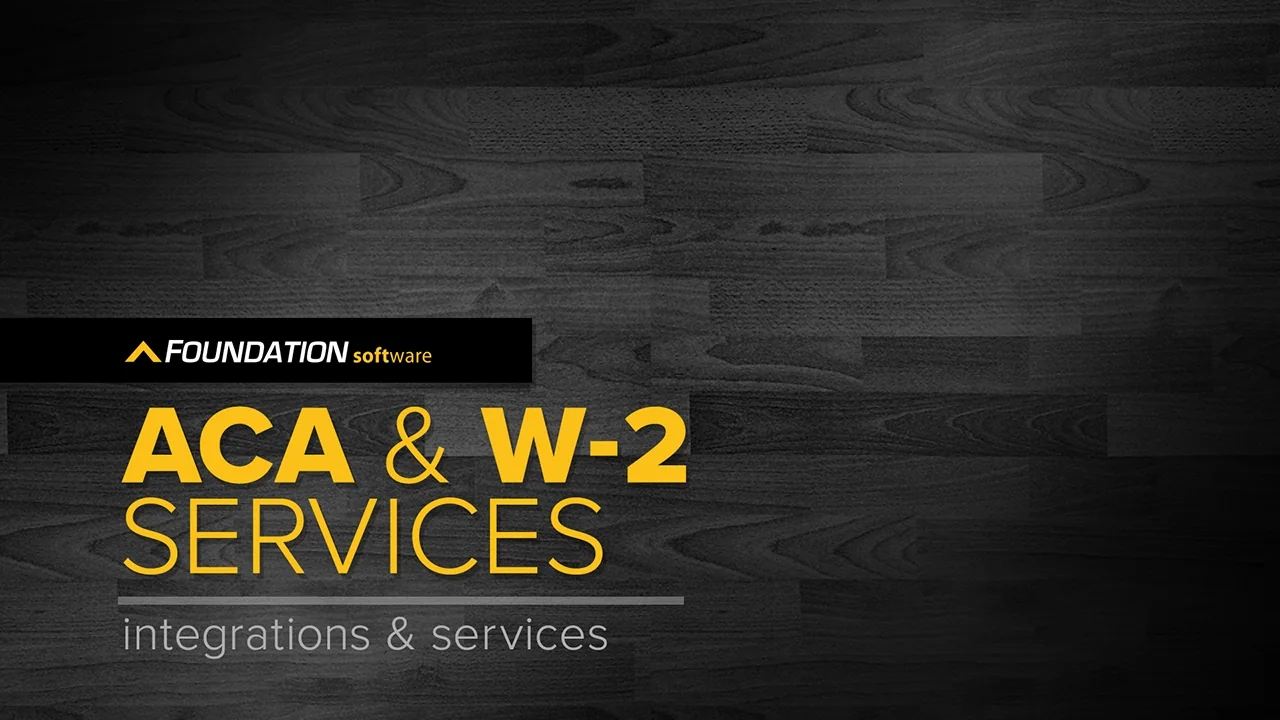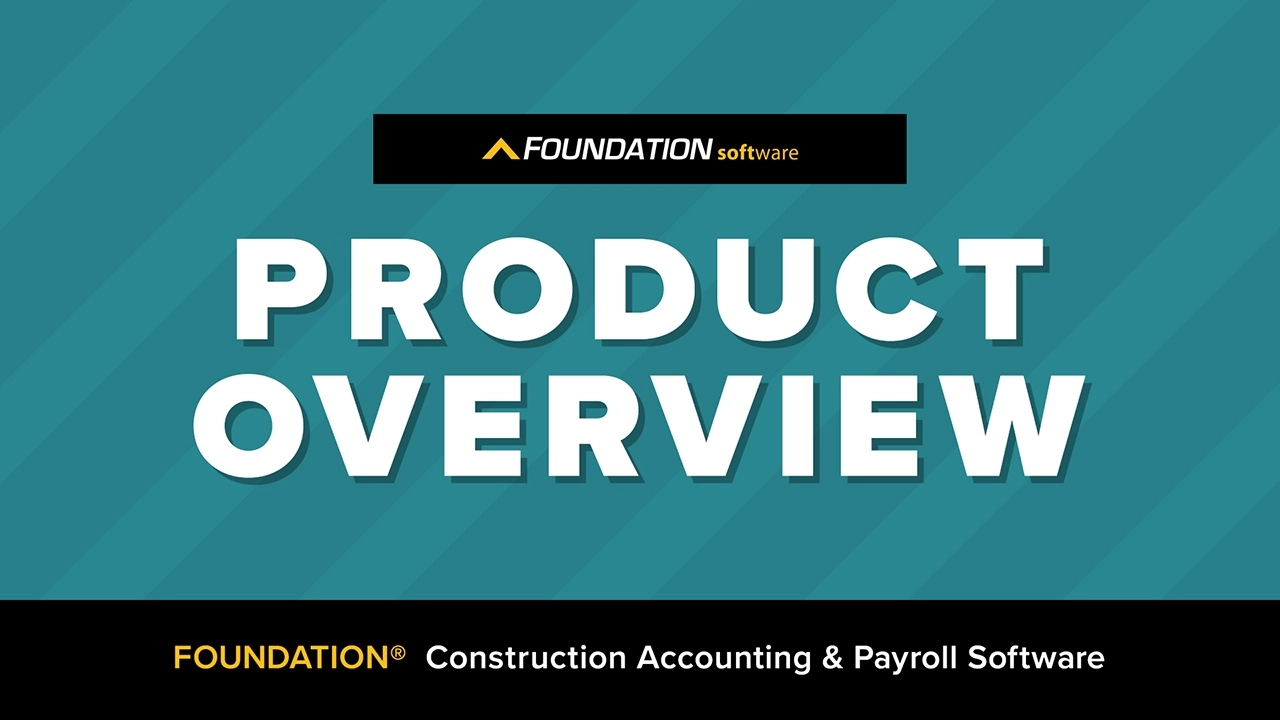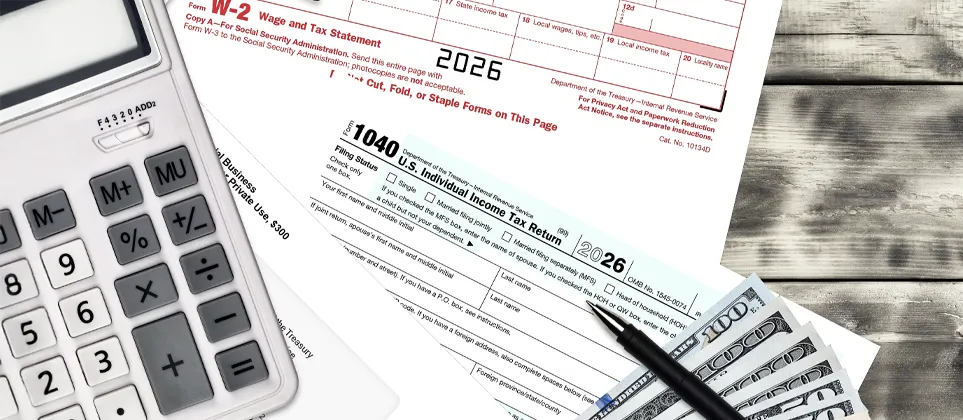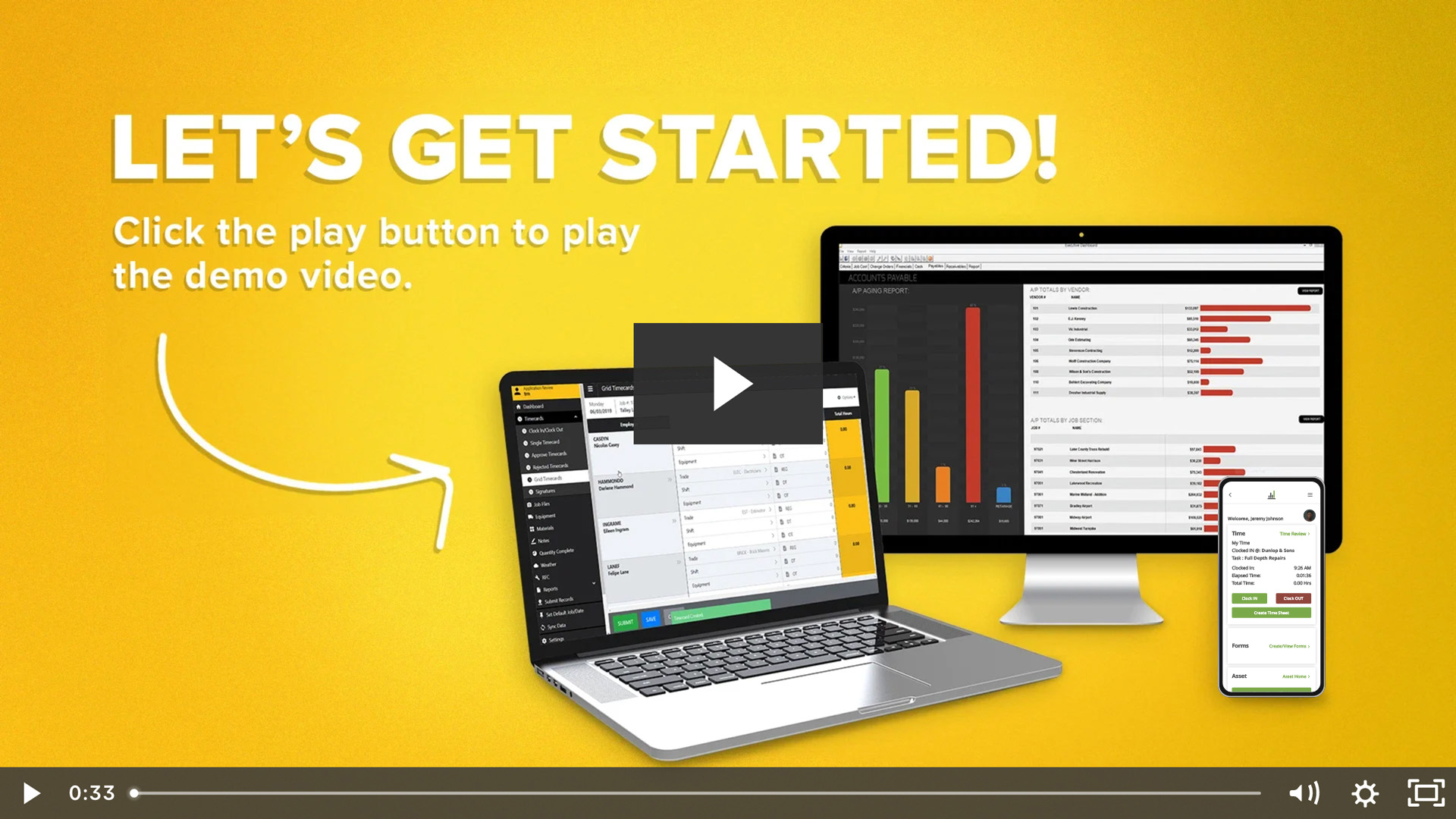
Construction projects are becoming increasingly complex, requiring contractors to rely on construction project phases to break down the entire job into more manageable stages.
Leveraging technology has also become essential in navigating these complexities, as demonstrated by findings from the USG Corporation and the U.S. Chamber of Commerce Commercial Construction Index (CCI)‘s quarterly economic index.
According to their research, 70% of contractors believe that advanced technologies can:
- Enhance productivity (78%)
- Improve scheduling (75%)
- Enhance safety (79%) on construction sites
Understanding these phases and applying effective job costing practices can make the crucial difference between profitability and financial setbacks.
In this article, we’ll explore the phases of a construction project and how a job costing strategy, supported by construction accounting software, can improve the success each stage.
Key Takeaways for Contractors:
- Identifying costs early during the planning phase can help avoid budget overruns later.
- Regularly reviewing and adjusting costs during execution is crucial for staying on track.
- Leveraging construction-specific accounting software streamlines cost tracking and reporting across all phases.
- Detailed post-project analysis provides insights to refine future cost estimates.

Phase #1: Pre-Construction Planning
The pre-construction phase lays the groundwork for the project, focusing on defining goals, creating budgets and assembling the project team.
Success during this phase can prevent costly missteps later.
Conduct a Detailed Cost Estimate
Accurate cost estimates are the foundation of effective project management.
During this phase, it’s essential to identify key expense areas by breaking down costs into:
- Labor
- Materials
- Equipment
- Overhead
You can also enhance cost accuracy by leveraging historical data and industry benchmarks.
You can enhance cost accuracy by leveraging historical data, industry benchmarks and construction accounting software to create detailed cost models.
Remember to include contingency reserves, typically 5-15% depending on project complexity and risk, for unexpected expenses, such as material price fluctuations or unforeseen site conditions.
Use Technology to Refine Budgets
The pre-construction phase is where budgets are set, making it critical to ensure accuracy and foresight.
Advanced construction accounting software enables contractors to create precise budgets using real-time data, reducing the risks of miscalculation and unforeseen expenses.
Leveraging technology at this stage not only highlights cost-saving opportunities but also supports detailed proposals that secure client confidence and protect profit margins.
Additionally, adopting robust tools early on helps streamline risk management by identifying potential budgetary constraints and forecasting challenges, allowing contractors to mitigate financial setbacks before they arise.
Phase #2: Design and Development
This phase focuses on finalizing designs, obtaining permits and coordinating with stakeholders. Be careful, mismanagement in this phase can lead to project delays or budget overruns.
Monitor Changes to Scope
Scope changes are a common occurrence in construction but can be proactively managed by:
- Logging all change orders in real-time within your construction accounting software to track their financial impact
- Revising budgets promptly to accommodate scope modifications
- Reviewing updates with stakeholders to align expectations and minimize disputes
It’s also important to maintain transparency by regularly communicating with your construction employees on the jobsite for any potential changes that may occur.
Collaborate with Key Stakeholders
Early collaboration among architects, engineers and contractors is crucial.
This phase can be used to ensure designs align with budgetary constraints, identify potential risks, strategize solutions and establish clear roles and responsibilities to maintain project clarity.
Another benefit of accounting software built for the construction industry is that you can leverage the system to facilitate communication and information sharing among stakeholders.
Phase #3: Procurement

The procurement phase involves sourcing materials, hiring subcontractors, and securing equipment.
Proper management here directly affects the project’s financial health and helps avoid cost overruns on construction projects.
Negotiate with Suppliers
It’s crucial to remember that the most competitive pricing doesn’t always mean the absolute cheapest option.
Using cheap construction materials in your estimates can sometimes lead to lower quality, impacting your project timelines and potentially resulting in more expensive repairs later.
However, you can still significantly reduce material costs by:
- Comparing quotes from multiple suppliers to identify the best value for your money
- Negotiating bulk order discounts and establishing long-term agreements with reliable suppliers
- Monitoring market trends to stay informed about material price fluctuations
- Examine supply chain challenges to help you make informed purchasing decisions
According to the U.S. Chamber of Commerce, construction materials typically account for a significant portion of a project’s total cost, ranging from 40% to 60%.
With fluctuating material prices and ongoing supply chain challenges, finding construction material suppliers who offer not only competitive pricing, but also reliable service is essential.
Track Procurement Costs
Using construction-specific accounting software can help you log material and subcontractor expenses systematically.
This advanced construction accounting method ensures all purchases align with approved budgets and helps you avoid errors such as duplicate orders or missed payments.
Phase #4: Construction Execution
Execution is where plans transform into reality and a significant portion of project costs are incurred.
Effective job cost tracking and control during this phase are crucial for maintaining profitability.
Embrace Real-Time Job Cost Tracking
Real-time construction job costing empowers project managers to track:
- Labor hours
- Equipment usage
- Material consumption
Using construction job costing makes it easy to compare actual costs with budgeted amounts and swiftly address any deviations to prevent escalating cost overruns.
Implement Regular Cost Reviews
Regular cost reviews ensure projects stay on course.
Conduct weekly or bi-weekly reviews to reconcile payroll, construction project billing and material expenses with budget projections, hold teams accountable for their spending and make necessary adjustments to ensure timelines and budgets are met.
Phase #5: Project Closeout
In the final phase, the focus shifts to completing inspections, delivering the project and evaluating its financial performance.
Conduct a Financial Review
Analyze all financial data to:
- Identify discrepancies between estimated and actual costs
- Pinpoint recurring issues such as underestimated labor, construction labor shortages or unaccounted overhead
- Adjust estimating methods to improve future project accuracy
Construction accounting software can then generate comprehensive financial reports, including profit and loss statements, variance reports and cash flow analyses.
Leverage Historical Data for Future Success
Historical data is very valuable and provides invaluable insights. In fact, 52% of rework on construction projects is caused by poor project data and miscommunication.
Utilize construction accounting software to maintain a complete, accurate database of:
- Material costs
- Supplier performance
- Subcontractor reliability
- Labor productivity and hours logged by task
- Overhead costs and their distribution across projects
This information helps refine bids and create more realistic budgets for future projects.

Maintain Every Construction Project Phase With FOUNDATION
Managing job costs effectively throughout a construction project demands robust tools and strategies.
An effective tool like construction accounting software, specifically designed for contractors, like FOUNDATION, can help you implement effective job costing practices to improve your profitability.
FOUNDATION provides features such as real-time job cost tracking for a clear view of expenses at every stage.
With customizable financial reporting for in-depth project performance analysis and historical data management, contractors can improve future planning and execution while saving money.
Ready to take your job costing to the next level?
FOUNDATION construction accounting software helps you manage costs and boost profitability across every phase of your build, making it an essential tool for construction project phases.
Chat with a specialist today to learn more!
Share Article
Keep on current news in the construction industry. Subscribe to free eNews!
Our Top 3 YouTube Videos
Learn about our software more in depth with product overviews, demos, and much more!

Our ACA reporting & e-filing services include official 1094-C and 1095-C IRS reporting, optional e-filing (no applying for a TCC code required), mailing to your employees and experienced support to help you.

There are plenty of reasons to make FOUNDATION your choice for job cost accounting and construction management software — just ask our clients!

From job cost accounting software, to construction-specific payroll. Get an overview on your next all-in-one back-office solution.



